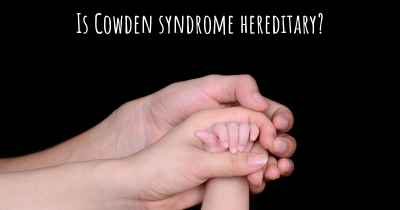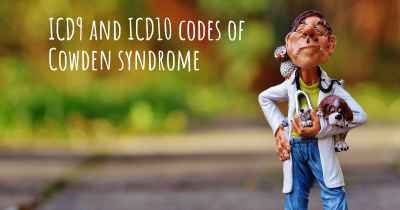What is the history of Cowden syndrome?
When was Cowden syndrome discovered? What is the story of this discovery? Was it coincidence or not?

Cowden syndrome, also known as Cowden's disease or multiple hamartoma syndrome, is a rare genetic disorder characterized by the development of various noncancerous growths called hamartomas. These growths can affect multiple organs and tissues throughout the body. Cowden syndrome is named after the American physician, Lloyd Cowden, who first described the condition in 1963.
Genetic Basis: Cowden syndrome is primarily caused by mutations in the PTEN gene, which is responsible for producing a protein that helps regulate cell growth and division. The PTEN gene acts as a tumor suppressor, preventing cells from growing and dividing too rapidly or uncontrollably. However, mutations in this gene can disrupt its normal function, leading to the development of hamartomas and an increased risk of certain cancers.
Prevalence: Cowden syndrome is considered a rare disorder, with an estimated prevalence of approximately 1 in 200,000 individuals. However, the actual prevalence may be higher due to underdiagnosis and the variable presentation of symptoms.
Clinical Features: Cowden syndrome is characterized by a wide range of clinical features that can vary among affected individuals. Some of the most common signs and symptoms include:
- Multiple Hamartomas: The hallmark feature of Cowden syndrome is the development of multiple hamartomas, which are benign growths that can occur in various organs and tissues. These hamartomas can affect the skin, mucous membranes, gastrointestinal tract, thyroid gland, breast, and other organs.
- Macrocephaly: Many individuals with Cowden syndrome have an enlarged head size, known as macrocephaly.
- Facial Trichilemmomas: Trichilemmomas are benign tumors that typically develop on the face, particularly around the nose and mouth. These tumors are often a characteristic feature of Cowden syndrome.
- Acral Keratoses: Acral keratoses are wart-like growths that commonly occur on the hands and feet of individuals with Cowden syndrome.
- Thyroid Abnormalities: Cowden syndrome is associated with an increased risk of thyroid disorders, including goiter, thyroid nodules, and thyroid cancer.
- Breast Abnormalities: Women with Cowden syndrome have an elevated risk of developing breast abnormalities, such as fibrocystic changes, benign breast tumors, and an increased risk of breast cancer.
- Gastrointestinal Polyps: Some individuals with Cowden syndrome may develop polyps in the gastrointestinal tract, particularly in the colon.
Associated Cancers: One of the most significant risks associated with Cowden syndrome is an increased susceptibility to certain types of cancer. Individuals with Cowden syndrome have a higher lifetime risk of developing breast, thyroid, and endometrial cancers compared to the general population. Other cancers that may occur more frequently in individuals with Cowden syndrome include colorectal, kidney, and melanoma.
Diagnosis: Diagnosing Cowden syndrome can be challenging due to its variable presentation and overlap with other conditions. A diagnosis is typically based on a combination of clinical features, family history, and genetic testing. Genetic testing can identify mutations in the PTEN gene, confirming the diagnosis in affected individuals.
Management and Treatment: There is currently no cure for Cowden syndrome, so management focuses on regular surveillance and early detection of potential complications. This may involve regular screenings for breast, thyroid, and other cancers, as well as monitoring for the development of new hamartomas. Surgical removal or treatment of existing hamartomas may be necessary in some cases to alleviate symptoms or reduce the risk of complications.
Prognosis: The prognosis for individuals with Cowden syndrome can vary depending on the severity of symptoms and the development of associated complications, particularly cancer. Early detection and appropriate management can significantly improve outcomes and overall quality of life for affected individuals.
Research and Future Directions: Ongoing research is focused on further understanding the underlying genetic mechanisms of Cowden syndrome, as well as developing targeted therapies for the associated cancers. Additionally, efforts are being made to improve diagnostic criteria and increase awareness among healthcare professionals to facilitate early detection and intervention.








